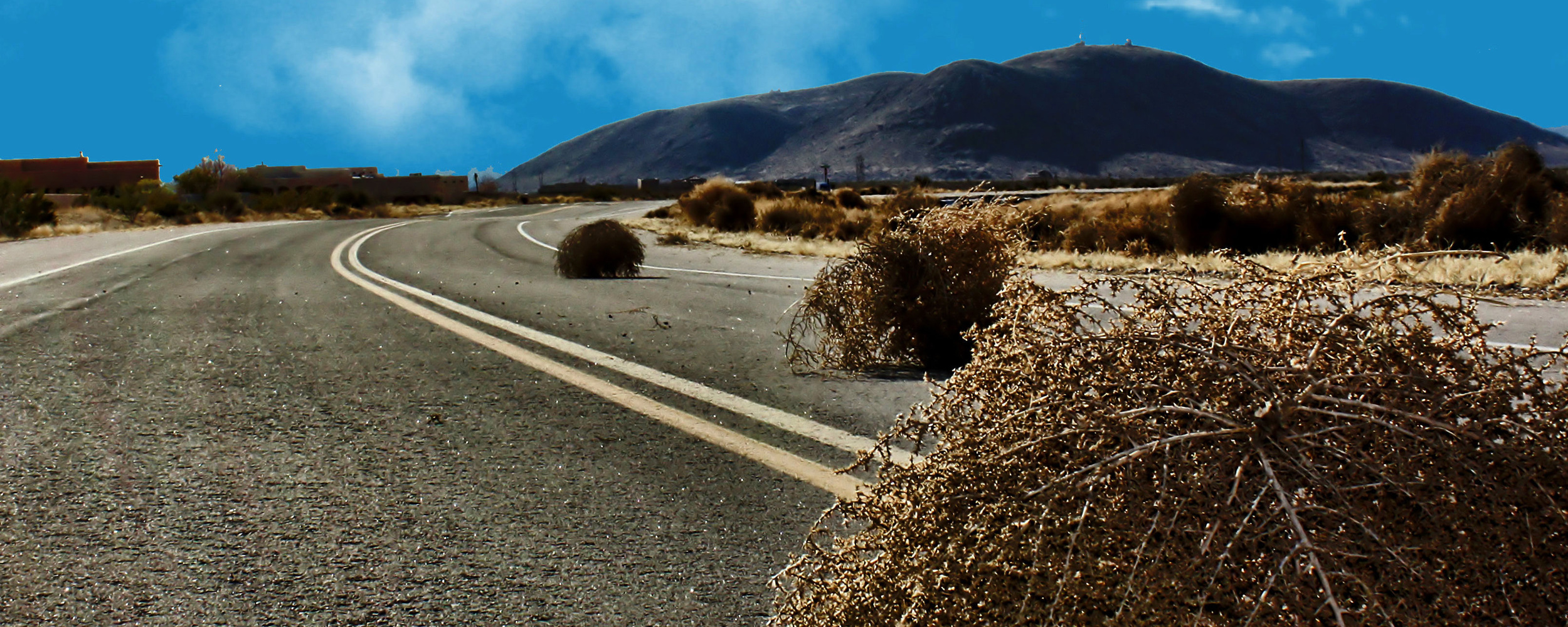The Humble Tumbleweed
/This past Saturday I was briefly but genuinely concerned that my dog Tycho would be injured by tumbleweeds. From a distance, they seem almost cotton ball–like: airy and round, perfectly suited to catching a breeze and bouncing along their merry way. Up close, though, they reveal themselves as spiny plant carcasses, sometimes several feet in diameter, stiff enough to scratch up cars and lacerate skin. When the wind picks up and whips them at you in 60 mph ambushes, watch out.
The term “tumbleweed” refers to a whole slew of plant species that go all out to spread their offspring each year. Where other plants send seeds into the world in small-scale diaspore—berries, nuts, helicopters, fluffs and puff-balls—tumbleweeds devote the bulk of their body to the task. In spring they sprout green shoots tender enough for desert herbivores like mice to chew. But come autumn each year, everything from the roots up dies, desiccates, and tumbles off to scatter hundreds of thousands of seeds as far as the wind will carry it.
Tumbleweed seeds consist of an embryonic plant tightly curled within a membrane, essentially hibernating without any shell or nutrients in reserve. They can take root in dirt that’s been disturbed and become inhospitable to other plants—dry, salty, alkaline, et cetera. All it takes is a little warmth and a touch of moisture for seeds to germinate, sending up shoots and leaves that start the cycle all over again.
Over the last century songs and movies have transformed tumbleweeds into a symbol of the Southwest, but in fact the iconic Salsola tragus is an invasive species. Its other common name, Russian thistle, reveals its origins: the Ural Mountains in central Russia. The species made its American debut in South Dakota in the 1870s, probably stowed away in flax seeds imported by well-intentioned Ukrainian farmers. Since it thrives in dry, windy, flat expanses, it quickly took the American West by storm, tumbling its way further and further each year until by 1900 it reached the Pacific Ocean.
Now people as far north as Idaho all the way south through New Mexico must contend with seasonal tumbleweed takeovers. Seriously—takeovers. Over the last few weeks, high winds off the western mesas brought mountains of the stuff into towns up and down the state, piling up in yards and blocking people’s doors like a prickly brown blizzard.
Fortunately, Tycho seemed pretty adept at dodging them as they bowled past us on a recent walk around the volcanoes at Petroglyph National Monument. And once they’ve settled to the ground, a few good stomps and kicks are enough to clear yourself a path! Just watch your step over all those crunched-up twigs—and keep an eye out for more blowing in from the horizon.
This post was brought to you by the weed scientists for New Mexico State University, the desert-lovers at DesertUSA, and the inspiration of recent blustery tumbleweed storms just outside Albuquerque.



